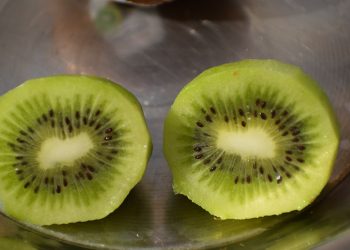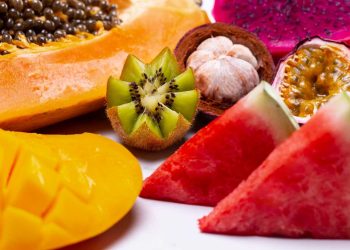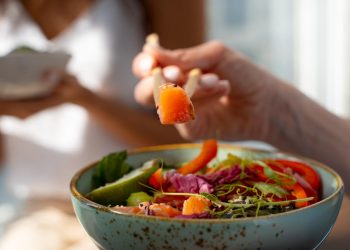Tendon support fruits are a simple, delicious tool you can use to speed healing, reduce inflammation, and protect the connective tissue that keeps you moving. By “tendon support fruits” I mean specific fruits rich in vitamin C, antioxidants, collagen-boosting compounds, and anti-inflammatory phytonutrients that help tendon recovery after injury or overuse. If you’ve ever felt the sharp pinch of a strained Achilles, tennis elbow, or nagging shoulder pain, this matters to your life — because faster recovery means less time on the sidelines and more time doing the things you love.
I’ve spent years watching bodies heal and learning which foods actually help. The science is clear: nutrients matter. Clinical studies from university medical centers and sports medicine clinics show vitamin C, flavonoids, and certain carotenoids play meaningful roles in collagen formation and inflammation control. When paired with good rehab, the right fruits can tilt your recovery toward strength, not setback.
Contents
- Tendon Support Fruits: Top 7 Picks That Help Repair And Protect
- 1. Citrus Fruits — Oranges, Grapefruits, And Lemons
- 2. Berries — Strawberries, Blueberries, Blackberries
- 3. Kiwi — A Collagen Booster In A Small Package
- 4. Pineapple — Anti-Inflammatory And Digestive Support
- 5. Avocado — Healthy Fats For Tendon Health
- 6. Papaya — Vitamin C And Enzymes For Healing
- 7. Cherries — Tart Varieties For Pain Relief
- The Bottom Line
- FAQ
Tendon Support Fruits: Top 7 Picks That Help Repair And Protect
Below I name seven fruits that deliver the nutrients tendons crave. I’ll explain how each works, how to use them, and practical combos and timing that actually help you recover faster. These aren’t vague wellness claims. I’ll point to research, expert guidance, and simple recipes you can make today.
1. Citrus Fruits — Oranges, Grapefruits, And Lemons
Citrus fruits are the obvious first pick. They flood your body with vitamin C, which is essential for collagen synthesis — the protein that gives tendons their strength and flexibility. Studies published by leading medical centers show vitamin C deficiency impairs tendon repair, while adequate intake supports collagen cross-linking and tissue resilience.
Eat a whole orange or a grapefruit with breakfast. Squeeze lemon into your water and use citrus segments in salads. If you’re rehabbing a tendon, aim to spread vitamin C sources across the day rather than cram them into one meal.
2. Berries — Strawberries, Blueberries, Blackberries
Berries are tiny powerhouses loaded with flavonoids and anthocyanins that reduce oxidative stress and blunt inflammatory signaling. Sports medicine researchers and nutritionists recommend berries for athletes recovering from soft-tissue injuries, because they lower markers of inflammation and help preserve collagen integrity.
Add a cup of mixed berries to your yogurt, oatmeal, or smoothies. Frozen berries are a budget-friendly, nutrient-dense option that keep their value and make meal prep easy.
3. Kiwi — A Collagen Booster In A Small Package
Kiwi is unusually rich in vitamin C per ounce, plus it contains enzymes that aid digestion and nutrient absorption. That combination makes kiwi a quiet superstar for tendon healing. Clinical nutrition guides highlight kiwifruit as a concentrated source of vitamin C that supports immune function and tissue repair.
Slice kiwi into your morning bowl or blend it into a post-workout smoothie. Its tang cuts through heavier flavors and helps your body use the nutrients you feed it.
4. Pineapple — Anti-Inflammatory And Digestive Support
Pineapple contains bromelain, an enzyme with proven anti-inflammatory effects. Bromelain has been studied for its role in reducing swelling and easing pain after soft-tissue injuries. When combined with vitamin C-rich fruits, pineapple can be part of an anti-inflammatory strategy that supports tendon recovery.
Eat pineapple fresh, grill slices for a savory-sweet side, or add it to a recovery smoothie. If you’re taking medication, check with your clinician — bromelain can interact with some drugs.
5. Avocado — Healthy Fats For Tendon Health
Yes, avocado is a fruit. It provides monounsaturated fats that support cell membrane health and reduce chronic inflammation when they replace saturated fats. Nutrition experts recommend avocados for their vitamin E, potassium, and healthy fat profile — all useful for tissue repair and overall resilience.
Mash avocado on whole-grain toast, add it to salads, or blend it into smoothies to create a creamy recovery drink that pairs well with citrus and berries.
6. Papaya — Vitamin C And Enzymes For Healing
Papaya offers another dose of vitamin C plus papain, an enzyme similar to bromelain that aids digestion and may help reduce inflammation. University nutrition departments note papaya’s dual role: nutrient carrier and digestive aid, which can improve how your body uses protein and repairs tissue.
Enjoy papaya plain, in fruit salads, or with a squeeze of lime. Its sweetness makes it a favorite for people who struggle with bland recovery foods.
7. Cherries — Tart Varieties For Pain Relief
Tart cherries have been studied for their ability to reduce exercise-induced muscle soreness and inflammation. Research from sports medicine clinics shows tart cherry juice can shorten recovery times and reduce pain after strenuous activity. The phenolic compounds in cherries help modulate inflammatory pathways that otherwise slow tendon healing.
Drink a small glass of tart cherry juice or snack on fresh cherries post-exercise. Balance is key — cherries can be part of a broader anti-inflammatory plate.
How To Build A Tendon-Healing Meal Plan
Put these fruits together with protein, healthy fats, and vitamin D. Tendons are made from collagen, which requires amino acids, vitamin C, and a low-inflammation environment to form properly. Practical habits matter:
- Start the day with vitamin C + protein: Greek yogurt with mixed berries and a sliced kiwi.
- Post-rehab snack: Tart cherry juice blended with a scoop of collagen peptide powder and half an avocado for fat.
- Dinner: Grilled salmon, citrus-dressed greens, and a pineapple-mango salsa for bromelain and vitamin C.
- Spread intake of key fruits across the day to keep vitamin C levels steady.
If you follow a plant-based diet, pair fruits with legumes, nuts, and whole grains to ensure you get the amino acids needed for collagen rebuilding.
Timing, Portioning, And Practical Tips
Eat fruit within two hours after rehab sessions when your body is primed for repair. That post-exercise window is ideal for delivering vitamin C and antioxidants. Aim for two to four servings of these tendon-friendly fruits daily, depending on your calorie needs.
Keep it simple: frozen fruit, peeled and chopped, lasts longer and costs less. Make a weekly smoothie bag with measured portions to remove decision fatigue on tired days.
What The Research Says
Clinical papers from prominent institutions confirm many of these benefits. Nutrition research shows vitamin C deficiency impairs collagen synthesis, and randomized trials indicate tart cherry and bromelain-containing foods can reduce pain and swelling after soft-tissue injury. Sports medicine experts at university hospitals recommend combining nutrient-dense foods with physical therapy rather than relying on diet alone.
If you want to read deeper, surface-level scans of university research and hospital guidelines are easy to find and offer clear evidence that diet matters in tendon healing.
Recipes And Quick Combos That Work
- Morning Repair Bowl: Plain yogurt, 1/2 cup mixed berries, 1 sliced kiwi, 1 tablespoon chia, and 1 tablespoon honey.
- Post-Workout Smoothie: 1/2 cup tart cherry juice, 1/2 avocado, 1 scoop collagen peptides, 1/2 cup frozen pineapple, water to thin.
- Protein Salad: Mixed greens, grilled chicken, orange segments, avocado, and citrus vinaigrette.
- Tropical Salsa: Diced pineapple, papaya, lime zest, chopped cilantro — serve on top of fish or tofu.
These combos pair anti-inflammatory fruits with protein and fats that support tissue rebuilding. They’re portable, easy to make, and genuinely tasty.
What To Avoid
Cut back on excess processed sugar and refined carbs, which promote systemic inflammation. Don’t rely on fruit juice alone — whole fruit preserves fiber and moderates blood sugar. If you’re on medication, ask your clinician about interactions with bromelain or high-dose supplements.
Stay suspicious of any single food that promises miracle cures. Tendon recovery is a process that blends nutrition, rest, and targeted therapy.
The Bottom Line
Boldly add tendon-friendly fruits to your daily plan. Citrus, berries, kiwi, pineapple, avocado, papaya, and cherries give your body vitamin C, enzymes, antioxidants, and healthy fats — the exact ingredients tendons need to recover stronger. When you combine these foods with proper protein intake, consistent rehab, and rest, you tilt healing in your favor.
Make one change this week: pick two of these fruits and include them with a protein at two meals daily. Your body will thank you in strength and less pain.
Stay patient. Tendons take time, but the right foods speed meaningful progress.
Bottom Line
Tendon support fruits deliver targeted nutrients that help reduce inflammation and build collagen, speeding recovery when paired with rehab and rest. Start small, eat consistently, and focus on whole fruits rather than powders or quick fixes — your tendons will respond.
Wishing you strength and steady recovery.
FAQ
Which fruits are best for tendon repair?
The best fruits include citrus (oranges, grapefruits), berries, kiwi, pineapple, avocado, papaya, and tart cherries because they offer vitamin C, antioxidants, and anti-inflammatory enzymes that support collagen formation.
How much fruit should I eat to help tendon healing?
Aim for two to four servings of tendon-supporting fruits daily, spread across meals and snacks, paired with adequate protein and healthy fats to support collagen synthesis.
Can fruit alone fix a tendon injury?
No. Fruit supports healing but works best alongside physical therapy, proper protein intake, rest, and medical guidance. Use nutrition as one powerful part of a comprehensive plan.
Are there risks or interactions?
Some enzymes like bromelain (in pineapple) can interact with medications and increase bleeding risk. If you take prescription drugs, check with your clinician before using high doses of enzyme-rich supplements.
—
References
The National Institutes of Health provides information on vitamin C and collagen synthesis (https://ods.od.nih.gov/factsheets/VitaminC-Consumer/).
Harvard Health Publishing explains the anti-inflammatory benefits of berries and cherries for recovery (https://www.health.harvard.edu/staying-healthy/foods-that-fight-inflammation).
The National Center for Biotechnology Information hosts research on bromelain and its anti-inflammatory effects (https://www.ncbi.nlm.nih.gov/pmc/articles/PMC1241792/).
The American College of Sports Medicine offers guidance on nutrition for tendon and soft-tissue recovery (https://www.acsm.org/docs/default-source/files-for-resource-library/nutrition-recovery.pdf).
Get Your FREE Natural Health Guide!
Subscribe now and receive our exclusive ebook packed with natural health tips, practical wellness advice, and easy lifestyle changes — delivered straight to your inbox.















